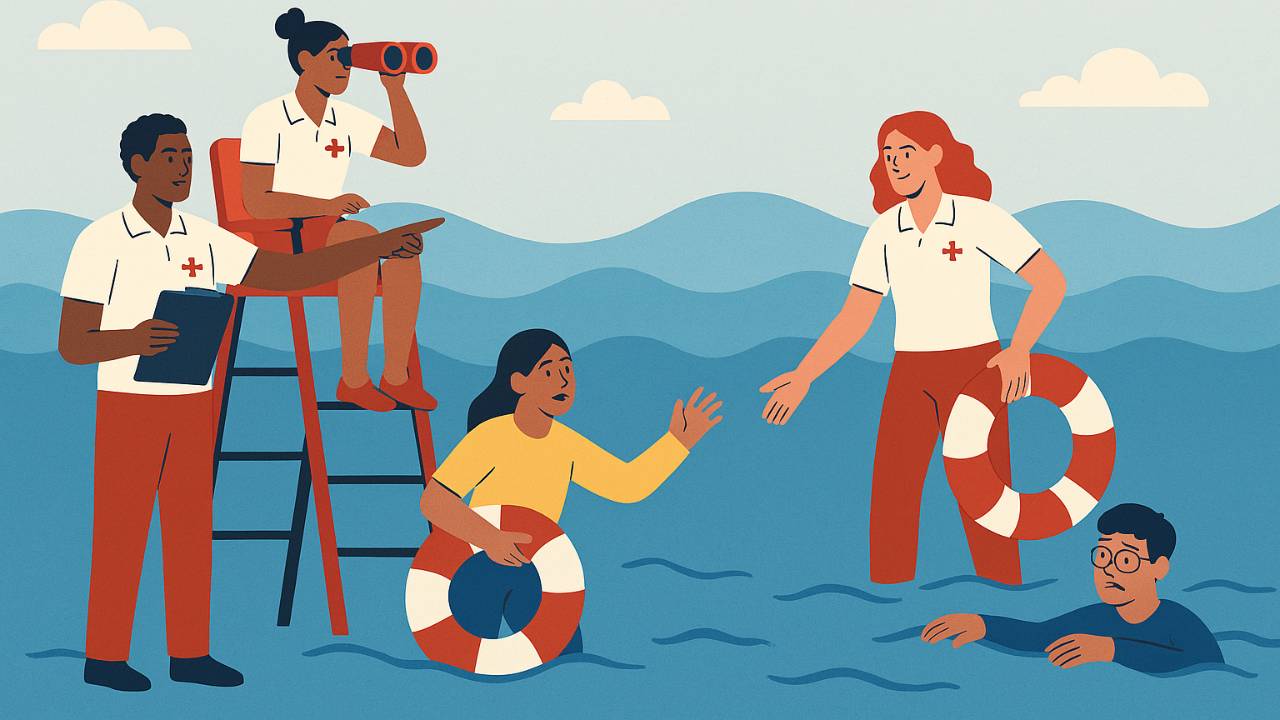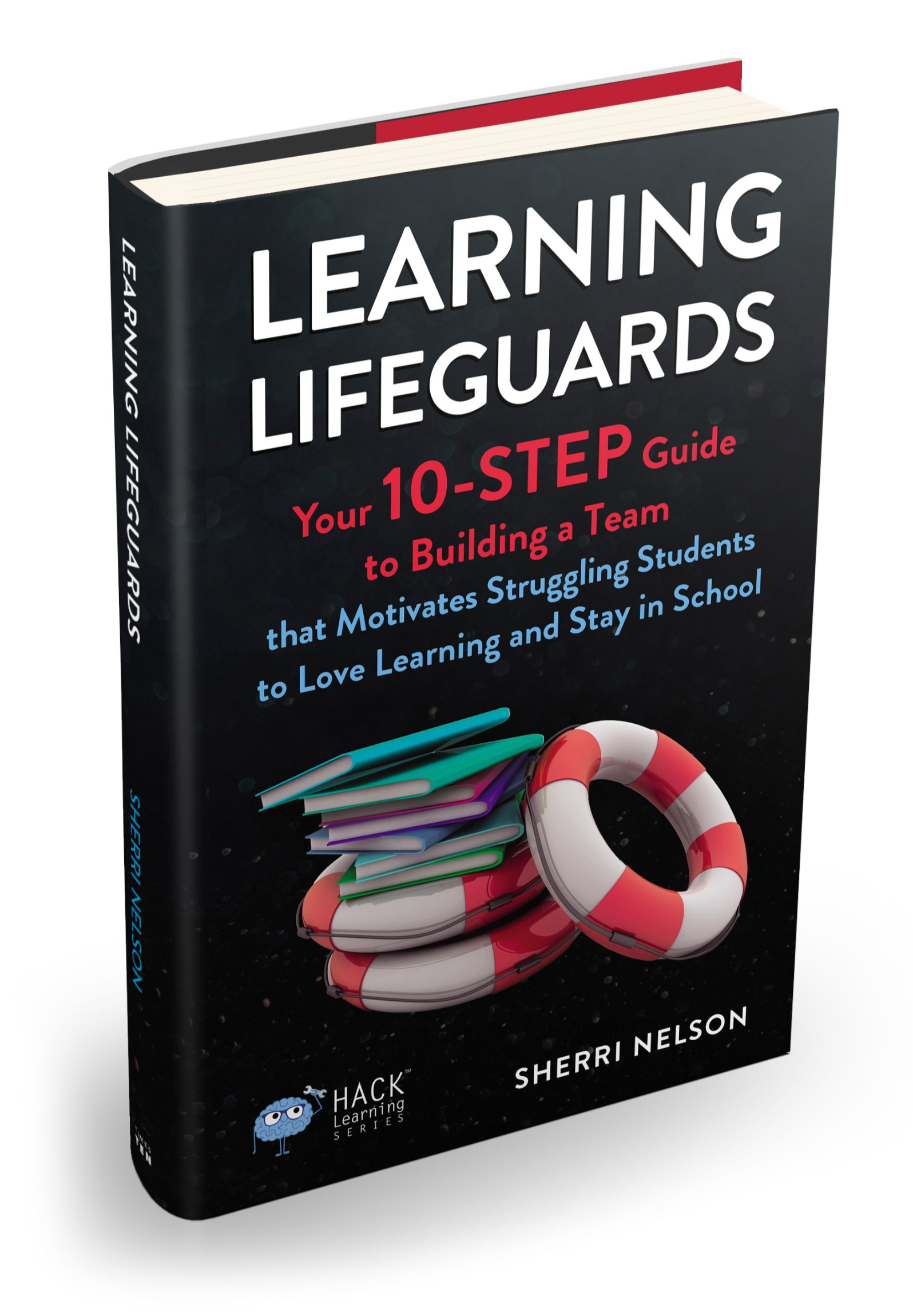Learning Lifeguards: A fresh approach to helping struggling students thrive
Apr 02, 2025
Every educator has had a moment when they realize a student is silently sinking—falling behind academically, emotionally checked out, or simply lost in the tide of classroom expectations. But what if we approached these moments like lifeguards at the beach, scanning for danger, prepared to respond with calm and clarity?
Enter the concept of Learning Lifeguards—a new framework designed to help educators proactively support struggling students by assembling a team, monitoring progress, and responding with precision and care.
Here’s how you can bring the Learning Lifeguard model to life in your school or classroom.
Assemble a Lifeguard Team
Just as no lifeguard watches an entire beach alone, no educator should shoulder the responsibility of student success alone. Start by assembling a Lifeguard Team—a small, collaborative group of teachers, counselors, secretaries, custodians, and/or school leaders who regularly meet to identify, discuss, and support students in academic distress. NOTE: any adult can be a lifeguard.
This team should be diverse in expertise and perspective, ensuring that students' academic, social, and emotional needs are all considered. Think of it like a safety net made up of different threads—each member of the team brings a unique strength to the collective effort of keeping students afloat.
What You Can Do Tomorrow:
-
Identify 3–5 colleagues who could serve as your first Learning Lifeguards.
-
Set a bi-weekly meeting to review data and student needs.
-
Choose 2–3 students to monitor as a pilot group.
Monitor All Students
Lifeguards don’t wait until someone is drowning to start watching. They’re constantly scanning, even when everything appears calm. The same principle applies to your classroom. Monitoring students regularly—through formative assessments, observations, and student check-ins—helps you spot early warning signs before they become bigger problems.
Academic struggle is rarely about a lack of intelligence.
Don’t limit your attention to the students already failing. Monitor all students, including those who appear “fine.” Struggles often begin subtly, and proactive observation is the best prevention.
What You Can Do Tomorrow:
-
Start a simple observation log for your students.
-
Use color-coded signals (green, yellow, red) to track their engagement and performance.
-
Make it a habit to connect with 2–3 students each day for a quick check-in.
Assess the Situation Before Jumping In
It’s instinctual to leap to a student’s aid—but just like in real lifeguarding, jumping in without assessing the situation can lead to missteps. Take time to gather information before taking action. Ask: What’s the root cause of this student’s struggle? Is it content-specific confusion, lack of confidence, attendance issues, or something deeper?
Quick fixes rarely lead to lasting change. A thoughtful, measured response gives you the best chance of helping students get back on track.
What You Can Do Tomorrow:
-
When a student is falling behind, ask yourself and your team: What patterns are we seeing?
-
Conduct a mini-interview with the student to understand their perspective.
-
Review any past interventions—what worked, what didn’t?
Determine Why Students Are Academically Struggling
Before you can support a struggling swimmer, you need to know why they’re struggling. Are they caught in an emotional undertow? Are waves of poor attendance pulling them under? Are they battling internal doubts or external distractions?
Academic struggle is rarely about a lack of intelligence. It’s often about unmet needs, misunderstood instructions, or mismatched pacing. Use your team’s insight and student data to investigate root causes.
What You Can Do Tomorrow:
-
Build a short checklist to assess possible causes of struggle: skills gaps, home life challenges, motivation issues, etc.
-
Collaborate with families, if appropriate, to get a fuller picture.
-
Be open to causes beyond the classroom—sometimes the problem isn’t academic at all.
Keep Students Afloat
The goal isn’t always to “fix” a student immediately—it’s to keep them afloat until long-term solutions take hold. Sometimes, that means offering scaffolds like guided notes, extra time, or frequent feedback. Other times, it’s about emotional support and encouragement to rebuild their confidence.
Lifeguards are steady, calm, and consistent. The same tone should guide your interventions. When students feel supported—not rescued—they’re more likely to engage, persevere, and succeed.
What You Can Do Tomorrow:
-
Choose one strategy to try with a struggling student—chunking instructions, offering frequent check-ins, or setting smaller goals.
-
Celebrate small wins publicly and privately to build momentum.
-
Reassure students that struggling is a normal part of learning.
Navigate the Currents
Just like ocean currents change, students' needs and academic trajectories do too. What helped last month may not help today. Lifeguards constantly adapt to changing tides, and educators must do the same.
Recalibrate regularly. Use team meetings to reassess students' progress and update your strategies. Flexibility isn’t just a bonus—it’s a requirement.
What You Can Do Tomorrow:
-
Revisit your original plan for a struggling student—what’s working? What isn’t?
-
Adjust your expectations and support as needed.
-
Keep the student involved in setting their learning goals—student voice matters.
Final Word: From Rescuers to Guides
The Learning Lifeguard approach isn’t about being the hero who swoops in to save students—it’s about becoming a steady, watchful guide who sees every student, anticipates their needs, and works with a team to help them thrive.
By assembling your Lifeguard Team, monitoring all students, assessing before intervening, and adapting to each student's learning journey, you're not just preventing academic failure—you’re creating a culture of vigilance, support, and hope.
Because every student deserves someone who’s watching, someone who cares, and someone who’s ready to help them rise above the waves.
Additional resource
Discover the ultimate lifeline for supporting students from Sherri Nelson with Learning Lifeguards: Your 10-Step Guide to Building a Team That Motivates Struggling Students to Love Learning and Stay in School. This empowering guide offers struggling learners a lifeline by equipping educators with actionable strategies for creating a school community where every student not only treads water but succeeds.





